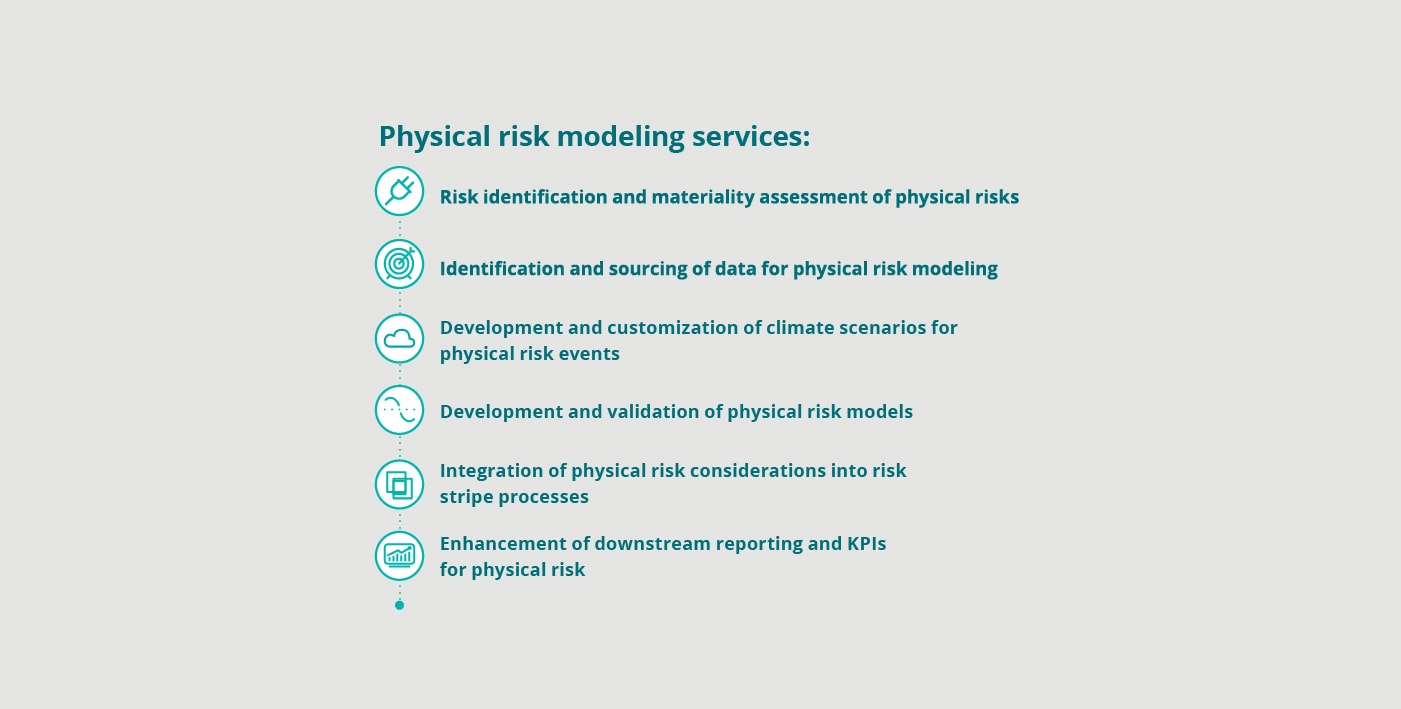Physical risk modeling in financial services has been saved

Perspectives
Physical risk modeling in financial services
A deep dive into climate change risk management
Explore existing and future climate risks to financial institutions, how physical risks and business risks often go hand in hand, different methods for measuring and modeling physical risk, and key insights for physical risk management.
Organizations are increasingly devoting resources to managing the impact associated with the environmental risk of climate change. While both transition risk and physical risk are key components of climate risk management, this recent report discusses the manifestation of physical risks as business risks, the range of practices for measuring and modeling physical risk, and key challenges and solutions for physical risk modeling.
How climate risks can impact financial institutions
Acute physical risks, like extreme weather events, and chronic physical risks, like longer-term climate shifts, can manifest as business risks for organizations across different industry sectors. They depend on transmission channels, which are usually considered to be microeconomic or macroeconomic. On a microeconomic level, a flood may cause damage to a data storage center owned by the business, which, in turn, could lead to operational losses associated with system downtime or lost data. On the other hand, issues around reduction in economic output, price adjustment due to supply shocks or policy changes, or even capital depreciation fall under the macroeconomic umbrella.
Physical risks like this may also manifest themselves as business risks on both a direct and indirect basis. Often, risks have a negative impact on macroeconomic conditions, particularly at local and regional levels, which may further reduce revenue for a particular business.
It’s important to note that several categories of these business risks have elements that are unique to financial institutions. In particular, understanding the impacts of climate risk on credit, market, liquidity, and underwriting risk has been a focus for financial institutions. Because banks are in the business of lending, credit risk is arguably the most important consideration within the banking sector.
While both transition risk and physical risk may manifest as credit risk across a bank’s lending book, many banking organizations have taken initial steps to focus efforts of transition risk around commercial and industrial (C&I) and commercial real estate (CRE) portfolios, and physical risk on CRE and mortgage portfolios.
Modeling data and methodologies for physical risk management
Physical risk modeling methodologies are designed to measure the impact of climate events by assessing the potential for occurrence and severity, and the choice of modeling approach can be driven by the focus on direct or indirect damages on a firm’s exposure to acute and chronic physical risks. Common modeling approaches and use cases range from macroeconomic models, which offer insight regarding the overall physical risk of company losses, to catastrophe risk models, which can be effectively used in scenario analysis.
Risk management assessments require a variety of data—both internal and external—on current and future hazards, so some firms leverage open-source datasets for sourcing physical risk hazard data, such as those from climatological and geological survey agencies.
Other organizations and institutions may use physical risk models from publicly available research, leverage commercial vendor solutions, or even develop in-house modeling approaches. Third-party data vendors are also growing rapidly to provide more granular data solutions, such as the assignment of damage scores at the geo-coordinates level for physical risk scenarios.
Next steps for environmental risk in finance
There are a myriad of challenges that institutions might face when it comes to facing physical risk management, but a variety of solutions are available. Some organizations face constraints around available and granularity of data, while others find that indirect effects from physical risks are proving difficult to quantify. In this report, learn more about additional modeling methodologies, challenges, suggested solutions in assessing physical risks, and how Deloitte can help.

Recommendations
Translating banks’ climate commitments into action: going green isn’t always black and white
QuickLook
Creating a climate of change
Addressing the business ramifications of climate risk on banks




